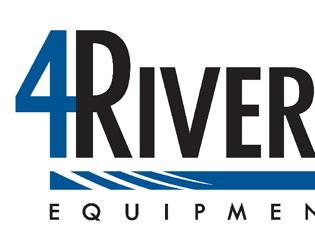






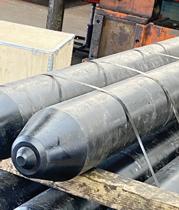




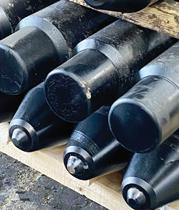














By Irwin Rapoport
Since work began on June 25, 2025, on the Arizona Department of Transportation’s (ADOT) $600 million Interstate 10 between Kino Country Club Road Project southeast of downtown Tucson, crews from Sundt Construction and Jacobs have engaged in median embankment, abutment construction and utility relocation operations.
The initiative’s goal is to reduce delays and enhance safety.
“ADOT initiated the project in this rapidly growing part of Tucson to address traffic capacity and congestion, improve safety, increase traffic flow,” said Garin Groff, an ADOT spokesperson, “and improve two traffic interchanges Kino Parkway and at Country Club Road. The new freeway and interchange configurations will also promote safety with auxiliary lanes that will allow for additional merging space.”
Sundt expects to complete work sometime in 2028.
The largest highway construction project in southern Arizona history is reconstructing and widening a 3-mi. section of I-10 between Kino Parkway and Alvernon Way from two lanes to three lanes in each direction, with auxiliary lanes; reconstructing the interchange at Kino Parkway; constructing a new interchange Country Club Road to provide access for traffic that uses the interchange at Palo Verde Road to allow for safer traffic movements to and from I-10; removing the existing interchange Palo Verde Road; and constructing a new westbound on-ramp at the Alvernon Way interchange and an I-10 undercrossing to connect the North and South Kino Sports Complex.
Work includes reconfiguring the nonstandard ramp configuration at the two interchanges to construct more traditional diamond interchanges. Also, ADOT is closing an existing interchange at Palo Verde Road due to its proximity to another interchange at Alvernon Way.
A new interchange at Country Club Road will promote safety and a better flow of traffic by providing more space from the Alvernon interchange to the east.
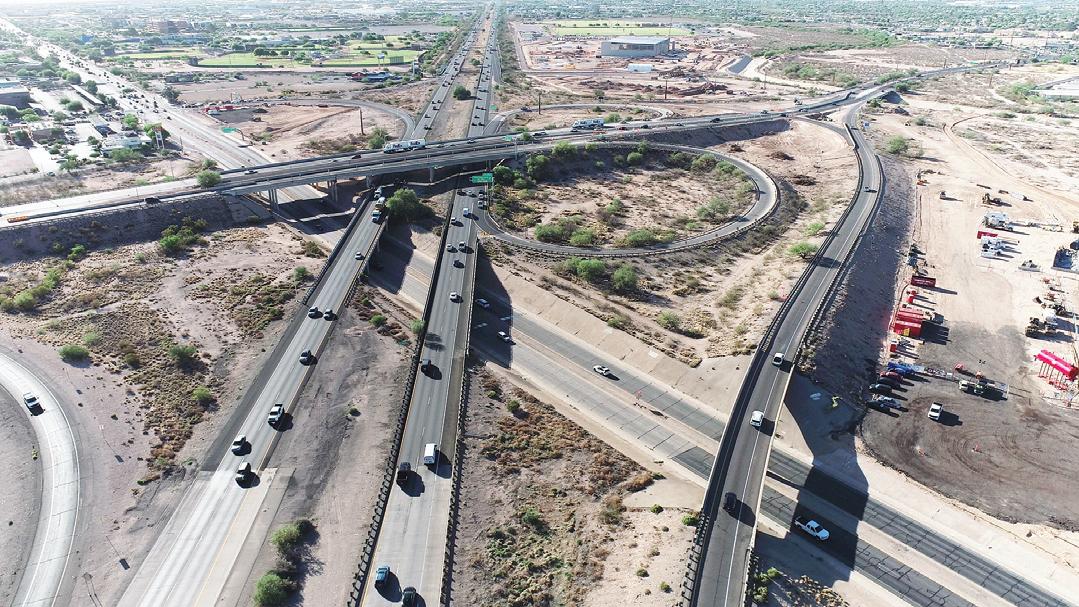
I-10 is the sole east-west interstate serving Tucson, a rapidly growing metro area of 1 million, and the rest of southern Arizona. Average daily traffic counts range from about 95,000 near the west end of the project at Kino Parkway to 75,000 at the east end near Alvernon Road.
The project will feature a relatively new type of interchange for southern Arizona: the diverging diamond.
“ADOT chose this design for Kino Parkway and I-10 over a traditional diamond interchange (DDI) based on traffic patterns, traffic volumes and safety,” Groff said. “This will be only the second diverging diamond interchange in southern Arizona, following the completion of the I10/Houghton Road DDI that opened 10 miles to the east in 2021.”
According to ADOT, “the project is the first to result from a study completed in 2020 that recommended how to best improve mobility along a roughly 10-mi. stretch of I-10 from Interstate 19 to Kolb Road.”
Jacobs, the lead design firm, is designing the project.
page 6

The scenic slopes and rugged terrain of Summit County, Utah, are helping demonstrate the power, reliability and control of Rokbak articulated haulers.
Approximately 42 mi. east of downtown Salt Lake City, three new RA30 trucks are working at the Black Rock Estates development. The haulers are supporting one of Utah’s luxury home builders, Mark 25 Homes, in constructing a new residential community in Park City, near Kamas.
Supplied by Rokbak dealer Rasmussen Equipment, the RA30 articulated dump trucks (ADTs) are performing critical daily hauling operations for the excavation phase of a multi-year project that will see the creation of 133 singlefamily homes and 48 cottages.
“We’re proud to support Mark 25 Homes with the highperforming RA30s that are built for tough terrain like this,” said Greg Gerbus, Rokbak regional sales manager — North America. “With steep grades and large volumes of earth to move, the RA30’s superior traction, operator-friendly ergonomics and control and overall low total cost of ownership have proven the ADT as the ideal solution for long-duration housing development projects such as Black Rock Estates.”
Mark 25 Homes has partnered with Rasmussen Equipment for years, relying on its expertise and premium equipment, including Rokbak articulated haulers, to meet the high expectations of luxury development.
The three Rokbak RA30s arrived on site in late June 2025 and began hauling immediately. Working five days a week across a sprawling job site that spans steep slopes and variable terrain, the RA30 ADTs are integral to managing the common excavation work that underpins the early phases of construction. The project is divided into multiple stages and is expected to maintain its fast pace for several years.
“Every day counts on a job like this,” said Jarrett Lindgren, superintendent for Mark 25 Homes. “The RA30s give our operators a real sense of control thanks to the engine exhaust brake and transmission retarder. These features make all the difference on our mountain site. They boost safety, speed up cycles and keep our drivers comfortable and confident.”
The RA30 delivers 30.9 US tons of payload, with a fuelefficient engine and automatic traction control for maxi-
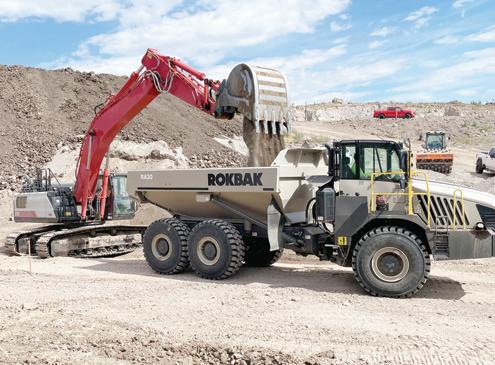
The RA30s are helping the construction project of more than 130 single family home sites and almost 50 cottages.
mum uptime and productivity, according to Rokbak. The steep gradients of the Black Rock Estates site are no problem for the RA30, which maintains excellent grip and stability in loose or muddy conditions.
Mark 25 Homes lead technician Les Brewer said he was impressed with the ease of maintenance and reliability the RA30s offer, especially under the full support of Rasmussen Equipment’s warranty package. The RA30s come with a three-year/3,000-hour full machine warranty, which includes onsite maintenance.
“With the RA30s on site and Rasmussen behind us, I’ve been able to focus on maintaining the rest of our fleet,” Brewer said. “It’s a major relief knowing we have that kind of support and the downtime is kept to an absolute minimum.”
Rasmussen Equipment has been the Rokbak dealer for Utah since 2015. Based in West Valley City, the company’s service team, led by Service Manager Mark Balanzich, understands the importance of responsive and knowledgeable after-sales support.
“At Rasmussen Equipment, we know that uptime is everything for our customers,” Balanzich said. “That’s why our team is committed to providing fast, knowledgeable after-sales support to help keep Rokbak trucks working hard and performing at their best.
“With our long-time relationship with Rokbak, we’ve built a strong united front based on trust, reliability and a shared dedication to customer success.”

“Rasmussen is more than a dealer; they’re a partner,” Lindgren said. “Whether it’s prompt delivery, parts availability or ongoing service, they always come through.”
To further enhance the performance of its new RA30 fleet, Mark 25 Homes will use Rokbak’s Haul Track telematics system. With real-time data on machine location, operating hours, fuel consumption and fault codes, Haul Track helps site managers and technicians stay ahead of maintenance needs and identify opportunities for improved efficiency.
“With Haul Track, we’re not just moving dirt, we’re moving forward with smarter, more informed decisions,” Brewer said.
With fuel consumption averaging four to five gal. per hour and uptime levels that consistently exceed expectations, the RA30 trucks are helping Mark 25 Homes achieve a strong return on investment. By lowering the overall cost per unit of material moved, the company can keep its development timelines on track and budgets under control, while maintaining the high standards that have defined its brand.
“The Rokbak RA30 is built to move more for less,” Gerbus said. “And in Utah’s demanding conditions, that reliability is more than a spec, it’s a necessity.”
Visit rokbak.com for details.
(All photos courtesy of Rokbak.)
Perini Corp., a civil, building and specialty construction company, announced on Sept. 16, 2025, that its subsidiary, Perini Management Services Inc., was awarded a contract valued at approximately $41.9 million by the National Park Service for the repair of critical utility systems in the Glen Canyon National Recreation Area in Arizona.
The project consists of the design and construction of comprehensive upgrades to the waste-
water infrastructure serving the Wahweap and Lone Rock developed areas.
The primary objective is to revitalize aging systems by replacing outdated components with modern materials and equipment, ensuring long-term reliability and environmental compliance.
The upgraded systems will be designed to meet or exceed the regulatory standards established by both the Arizona and Utah Departments of Environmental
Quality, as well as all applicable state regulations.
The project scope includes cured-in-place pipe (CIPP) lining and repairs to existing sanitary sewer infrastructure; upgrades and replacements of septic systems, manholes and lift stations; replacement of the Glen Canyon Bridge force main; installation of backup generators for lift stations to enhance system resilience; and modernization of the Supervisory Control and Data Acquisition
(SCADA) system, including local upgrades at Wahweap and Lone Rock and enhancements to the park-wide radio communication network.
Work is starting immediately, with substantial completion anticipated in the fall of 2027.
The park service has said that this is the first phase of the water infrastructure program at Glen Canyon, theconstructionbroadsheet.com reported.
A second phase will upgrade
drinking water systems and include the construction of a new water well, water treatment plant, water storage tanks and water distribution system improvement. That phase is in the pre-design and planning stage, theconstructionbroadsheet.com reported.
The park service has said both phases will receive funding through the Great American Outdoors Act National Parks and Public Land Legacy Restoration Fund.

HEI Civil, a heavy civil construction company, announced the successful conclusion of its third annual charity golf tournament.
The event, held on June 30, 2025, at The Pinery Country Club, raised more than $220,000, which generated $140,911 in proceeds, with $130,911 benefiting the Douglas County Veterans Monument Foundation and $10,000 supporting the Castle Rock Police Officers Foundation.
The charity golf tournament brought together participants and sponsors from across the local community for a day of giving back. Beyond an enjoyable round of golf, the event featured a silent auction, raffle and friendly competitions, including closest-tothe-pin and longest-drive contests.
“At HEI Civil, we believe in raising the bar in everything we do, and this year’s tournament was no exception. With the collaboration of our title sponsor, Denver Winwater, the generosity of our additional sponsors and the grit of our team and many volunteers, we achieved a record-breaking year for our charity golf tournament,” said Justin Curphy, vice president of project manage-
ment and estimating of HEI Civil. “This significant accomplishment is a true reflection of our core values in action, and we’re proud to make a meaningful impact for two powerful causes in our community.”
The Douglas County Veterans Monument Foundation plays a crucial role in preserving the memory of servicemen and women who have defended our nation's freedom.
“DCVMF is extremely grateful for the generosity provided by HEI Civil and its golf tournament participants. Through your support, we are able to continue assisting our local veterans in their times of need with monetary grants,” said Sean Pechon, the foundation’s board president.
The Castle Rock Police Officers Foundation provides essential support to officers and their families during times of crisis. The foundation offers temporary financial aid for officers who are seriously injured or killed in the line of duty, while also fostering meaningful partnerships between law enforcement and the community they serve. For more information, visit heicivil.com.






























I-10 is the sole east-west interstate serving Tucson, a rapidly growing metro area of 1 million, and the rest of southern Arizona.
SUNDT from page 1
“The biggest challenge was to find out how to build the project while maintaining traffic,” said Matthew Szpak, Sundt’s senior project manager/project engineer. “There are 15 bridges, and we have to keep traffic open on I-10 at all times. We have a structure that goes over I-10, so there are some logistical issues with that. The biggest challenge was figuring out the phasing in an effort to keep traffic flowing for the whole life cycle of the project.”
The bridges will have a 60-plus-year lifespan, and the concrete lanes will last more than 40 years.
The ongoing design process sets the tempo for the work performed.
“It goes hand-in-hand,” Szpak said. “The construction team is involved in the design meetings and performing constructability reviews, identifying things we like and don’t like. We propose different options — how we build something might be different from what they propose.
“With design still ongoing, we’ve only had limited packages being released at certain points in time. We actually got an early start, setting up yards and getting some of the precursor work out of the way and setting up water tanks. Construction started on the Alvernon westbound on-ramp, which facilitated the closure of the Palo Verde westbound ramps to facilitate safer traffic movements during phase two.”
Crews started building a ramp from Alvernon to I-10, an element completed on Sept. 9.
“It’s generally civil work — some embankment and barrier, curb and gutter asphalt paving and a little bit of drainage,” Szpak said. “We call this first phase the ready-up phase.
Much of the work will occur in the median area where the new lanes are being constructed, as are eight bridges. In this phase, half of the bridges are being constructed and approximately 28,000 yds. of concrete paving will be placed.
Bringing in equipment is no cakewalk.
“Phase two is the most difficult,” Szpak said. “Our access into the median isn’t ideal. We left ourselves a 12foot construction lane on the inside of the barrier, so it is possible for light-duty equipment to travel from one end to the other. Most of our equipment is delivered on flatbeds at night with a rolling slowdown. We have one gap in the barrier for the equipment to access the work site.”
Phase one was a bottom-up operation.

Work includes reconfiguring the nonstandard ramp configuration at the two interchanges to construct more traditional diamond interchanges.
“We started with our drainage,” Szpak said. “Once in, we started on embanking, fine grading the road, getting ready for curb and gutter, and barrier — whatever the treatment is for the edge of the road, and asphalt. We’re not starting on the concrete paving until all the bridges are done. We set ourselves up to go from one end to the other without having to transport paving equipment around each of the bridges.”
Much of Sundt’s fleet consists of Cat equipment. Phase 1 has operators using D5 and D6 dozers, 938 and 950 loaders and a bunch of excavators — 323s, 349s and 354s. Later, operators will use cranes and scrapers.
The median is essentially a ditch.
“We’re embanking it with dirt and, once we get it filled to subgrade, we will fine grade and get ready for asphalt,” Szpak said.
Over the next 12 months, Sundt’s focus is building up the grade in the median and constructing all substructures for the 15 new bridges and the superstructure for all the median bridges.
“We have two concrete crews,” Szpak said. “One crew is starting on the first abutments. They will go down the line, and the second crew is coming in building piers. We have abutments going in on I-10 over Ajo, which has already started. And once we have some crews freed up, we’ll also begin work on building the new diamond diverging interchange over Country Club Road.”
There are only three utility issues.
“We have an existing water line on Country Club Road that Tucson Water has subcontracted to a JOC contractor to relocate,” Szpak said. “They started in early September. We have an overhead power line that needs to be extended to maintain our minimum clearance over I-10, and there is a sewer in Irvington that is within 2 feet of our drill shafts. We are fortunate that there are not a lot of existing utilities that impact our work.”
In all there are four phases.
Phase 1 was the ready-up phase. Phase 2 covers all the median work, which is occurring in a 70-ft. wide area.
When the new lanes are built, traffic will be switched to them so that the work on Phase 3 can start, which is reconstructing the outside portion for the stretch of highway within the project limits and dealing with demo of the existing roadway, embankment of the new roadway, construction of the outside portion of all mainline bridges, construction of the Kino and Country Club DDIs and main line paving. Phase 4 focuses on cleanup, landscaping and tying everything together.
“There are a couple of tricky areas like Kino over I-10 where we have to shift traffic around to set each span over the I-10,” Szpak said. “We have one span over the eastbound lanes, so we’ll shift everyone over to the westbound side. Then do the same thing for westbound. The construction of the Kino diverging diamond intersection requires some unique traffic switches, but the bulk of the work is on the main lines.”
The concrete main lines have 14 in. of concrete paving on 4 in. of asphalt, while the DDI lanes and ramps will have 11 in. of wide paving on 4 in. asphalt.
The maximum length of the new bridges is 150 ft., with some having drill shafts and others spread footings.
The turn-off ramps at the Palo Verde interchange are being eliminated.
“There will be no on-ramps on Palo Verde,” Szpak said. “We’re moving them down to Country Club Road, and we’re rebuilding new bridges over Palo Verde on I-10.”
Placing concrete in Arizona is no simple task.
“We don’t pour a ton of concrete during the day over the summer in Arizona,” Szpak said. “It’s just too hot. All of it happens at night. During the winter, we’ll try to pour during the day, but a lot of the bridge structures, especially the superstructure, will be poured at night because we’ll need lane closures to facilitate that.”
For the roadwork, operators are using loaders, dozers, skid steers, excavators, scrapers, backhoes and compactors and, for the bridge work, forklifts, cranes and manlifts.
There are 60 Sundt and subcontractor employees on site, which will increase to 70-80 as the project ramps up.
Subcontractors include Stinger Bridge & Iron, Serrano Painting, Alta Land Survey, Ammex Rebar Placers, Antigo Construction, BrightView Landscaping, Brown and White, Buesing Corp., Cactus Asphalt, Dynamic Fencing and Fabrication, E.R. Hawkins, Franklin Striping, Hardy Hole Drilling, MGM Sweeping, Miura Contracting, Outdoor Systems Management, PACE Electrical Contractors, RGG United, AWP Safety and WSP.
New materials to be brought in include approximately 100,000 yds. of white paving, 88,000 tons of asphalt, approximately 60,000 yds. of concrete, 10,000 linear ft. of concrete storm drain and 24,000 linear ft. of metal and HDPE pipe.
Excavation and demolition should generate 500,000 cu. yds. of material. CEG
(All photos courtesy of the Arizona Department of Transportation.)





